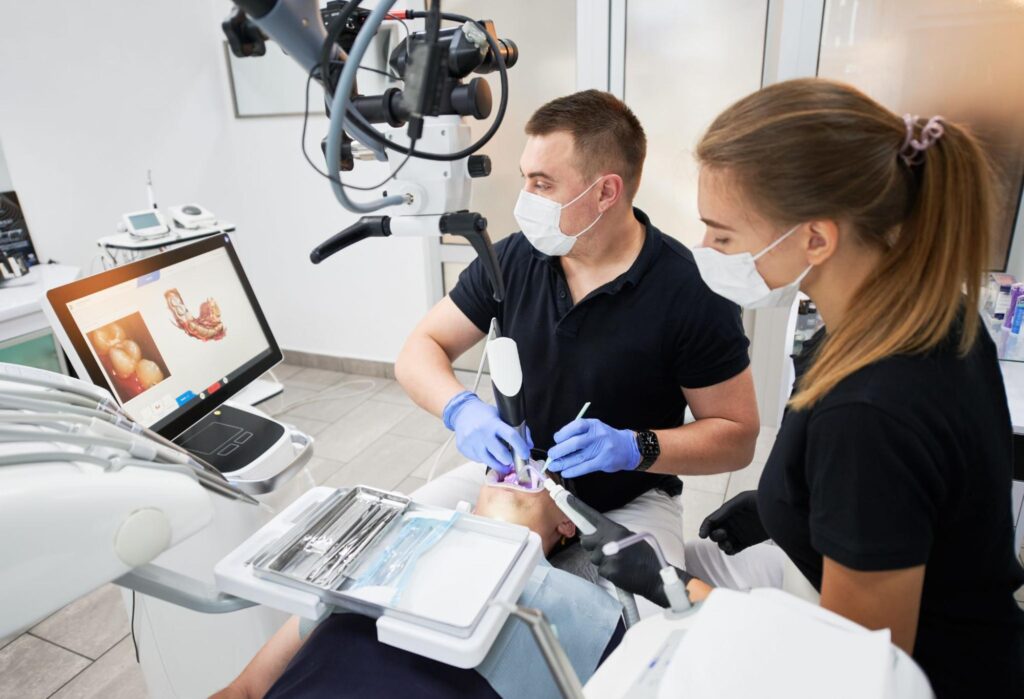Orthodontic technology has come a long way since the days of impression molds and headgear. Over the years, the Specialty Appliances team has kept a close eye on the advances in orthodontics that have provided orthodontists and patients with better outcomes, improved patient comfort, and shorter treatment times. Keep reading to learn how modern orthodontic technology improves the patient experience and boosts your practice’s efficiency.
Imaging & 3D Printing
Advances in digital imaging and 3D printing have revolutionized our ability to provide patients with more precise, accurate, and efficient treatment planning and appliance manufacturing. Here’s a deeper exploration of how these technologies are changing orthodontics:
Digital Imaging Technologies
Digital imaging technologies offer detailed views of your patient’s dental structures and surrounding tissues.
- Intraoral Scanners: These devices capture direct optical impressions quickly and accurately, eliminating the need for uncomfortable traditional mold-taking techniques. The result is a detailed 3D model of the patient’s dentition, which can be used to plan treatments and create orthodontic appliances.
- Cone-Beam Computed Tomography (CBCT): CBCT provides 3D images of the teeth, soft tissues, nerve pathways, and bone in a single scan. This is especially useful for assessing the positioning of unerupted teeth and the relationships between teeth and jawbones.
3D Printing in Orthodontics
3D printing has become a game-changer in orthodontics, enabling the rapid prototyping and production of custom orthodontic appliances.
- Custom Brackets and Aligners: 3D printers can produce devices that are perfectly contoured to the shape of each patient’s teeth, providing a comfortable, precise fit. For instance, clear aligners and custom brackets for lingual braces are often produced using 3D printing.
- Biocompatible Materials: Advances in materials science have led to the development of dental resins and other biocompatible materials that can be used in 3D printers. These materials are safe for medical use and offer the durability needed for orthodontic appliances.
Overall, the integration of advanced digital imaging and 3D printing technologies into orthodontic practice represents a significant leap forward. These technologies allow for greater precision, customization, and efficiency, transforming the way you plan, execute, and experience orthodontic care.
Artificial Intelligence
AI orthodontic technology introduces more personalized, efficient, and effective treatments by leveraging data from numerous cases to optimize treatment planning and outcome predictions.
AI-Driven Diagnostics and Treatment Planning
AI algorithms can analyze dental images, predict treatment outcomes, and create customized treatment plans based on vast amounts of data. This capability improves the precision and predictability of orthodontic interventions.
- Predictive Analytics: AI models can evaluate patterns from past orthodontic cases to predict how teeth will move in response to certain treatments, helping orthodontists develop more effective treatment plans.
- Image Analysis and Interpretation: AI systems can quickly and accurately interpret dental X-rays, CBCT scans, and photographs, identifying issues such as the degree of misalignment, which are critical for precise treatment planning.
Customization of Orthodontic Appliances
AI technology facilitates the design and manufacturing of customized orthodontic devices such as braces and aligners. Through sophisticated algorithms, AI can design appliances that are tailored to the unique dental anatomy of each patient.
- 3D Modeling and Simulation: Using AI, orthodontists can create detailed 3D models of a patient’s mouth. These models allow for simulations of different treatment strategies and outcomes, ensuring that each patient receives the most effective and customized treatment plan.
- Automation in Appliance Manufacturing: AI-driven tools can automate aspects of the manufacturing process for orthodontic appliances, enhancing precision and reducing production times.
Real-Time Adjustments and Monitoring
AI can also play a significant role in monitoring the progress of treatment and making real-time adjustments to ensure optimal outcomes.
- Remote Monitoring: AI algorithms can analyze images submitted remotely by patients to assess progress and recommend adjustments without the need for frequent in-office visits.
- Adjustment Predictions: AI can predict when and how to make adjustments to appliances, potentially reducing the treatment duration and improving patient outcomes.
Enhanced Patient Experience
AI orthodontic technology not only improves the efficiency and effectiveness of orthodontic treatments but also greatly enhances the overall patient experience.
- Increased Engagement: AI-powered applications can provide patients with visual predictions of treatment outcomes, increasing their engagement and compliance with treatment protocols.
- Educational Tools: AI-driven tools can help educate patients about their treatment options, processes, and expected outcomes, making the orthodontic journey more transparent and less daunting.

Minimally Invasive Techniques in Orthodontics
As advancements in imaging and AI orthodontic technology have continued to improve, so has our ability to reduce the physical impact of treatments. Your practice can now boost patient comfort and recovery through minimally invasive treatments, such as:
Micro-Osteoperforations
Micro-osteoperforations (MOPs) involve making small perforations in the jawbone around the teeth to accelerate tooth movement. This technique, facilitated by a device that creates tiny holes in the gum and bone tissue, speeds up the bone remodeling process, allowing for faster teeth alignment and more controlled healing.
Low-Level Laser Therapy
Low-level laser therapy (LLLT) is used to enhance the speed and comfort of orthodontic treatment by stimulating the tissues surrounding the teeth, promoting cellular function and speeding up the alignment process.

Keeping the Pulse of the Industry
Orthodontic technology continues to improve at an exponential rate, and we’re keeping track of every advancement. Cutting-edge tools are what make your practice competitive, after all, and as the largest leading orthodontic lab in the U.S., we’re working to make modern ortho tech accessible to you and your patients each and every day.
Submit your next case and get started today.

